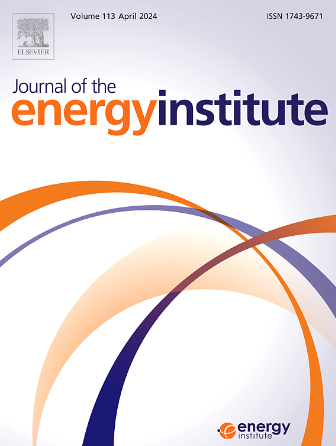Enhancement of biomass energy: thermal conversion, biogas yield, and machine learning insights
IF 6.2
2区 工程技术
Q2 ENERGY & FUELS
引用次数: 0
Abstract
Biomass is a promising feedstock that can be used to reduce the reliance on fossil fuel sources. This review has two main objectives: (i) to investigate the effects of temperature on the energy yield and higher heating value (HHV) of torrefied feedstocks and (ii) to provide an overview of biomass composition and its impact on conversion processes. The novelty of this review lies in highlighting that the physical and chemical properties of biomass largely depend on feedstock sources, which substantially influence conversion processes. Biomass bonds and moisture content are among the primary challenges for conversion, necessitating the selection of appropriate techniques. This review emphasizes that HHV and energy recovery from biomass raw materials are influenced by temperature when torrefaction and pyrolysis are adopted as the thermal pretreatment processes. HHV and energy recovery values range from 74.4 to 89.3%, when torrefaction is performed at temperatures between 250 and 300 °C. HHV can reach up to 35.26 MJ/kg under appropriate conditions, including the use of suitable feedstocks, temperatures, and durations. Cellulose and hemicellulose are more suitable for biochemical processes and positively impact yields, whereas lignin is better suited for thermochemical techniques but may hinder overall yields due to its recalcitrant nature. Moreover, this review introduces a novel classification system linking biomass composition to optimal conversion pathways, providing a new framework to improve biomass utilization efficiency and renewable energy production. Besides, it highlights the role of machine learning (ML) in predicting biogas yield with an accuracy of up to 1.0, which optimizes biomass conversion and improves energy recovery efficiency.

增强生物质能:热转换,沼气产量和机器学习见解
生物质是一种很有前途的原料,可以用来减少对化石燃料的依赖。本综述有两个主要目标:(i)调查温度对碳化原料的能量产量和较高热值(HHV)的影响;(ii)概述生物质组成及其对转化过程的影响。这篇综述的新颖之处在于强调了生物质的物理和化学特性在很大程度上取决于原料来源,这在很大程度上影响了转化过程。生物质键和水分含量是转化的主要挑战,因此需要选择适当的技术。本文着重介绍了采用热解和焙烧作为热预处理工艺时,温度对生物质原料的HHV和能量回收的影响。当温度在250 ~ 300℃之间进行焙烧时,HHV和能量回收率在74.4 ~ 89.3%之间。在适当的条件下,包括使用合适的原料、温度和持续时间,HHV可以达到35.26 MJ/kg。纤维素和半纤维素更适合生物化学过程并对产量产生积极影响,而木质素更适合热化学技术,但由于其顽固性,可能会阻碍总体产量。此外,本文还介绍了一种将生物质组成与最佳转化途径联系起来的新型分类系统,为提高生物质利用效率和可再生能源生产提供了新的框架。此外,它还强调了机器学习(ML)在预测沼气产量方面的作用,其准确度高达1.0,从而优化了生物质转化,提高了能量回收效率。
本文章由计算机程序翻译,如有差异,请以英文原文为准。
求助全文
约1分钟内获得全文
求助全文
来源期刊

Journal of The Energy Institute
工程技术-能源与燃料
CiteScore
10.60
自引率
5.30%
发文量
166
审稿时长
16 days
期刊介绍:
The Journal of the Energy Institute provides peer reviewed coverage of original high quality research on energy, engineering and technology.The coverage is broad and the main areas of interest include:
Combustion engineering and associated technologies; process heating; power generation; engines and propulsion; emissions and environmental pollution control; clean coal technologies; carbon abatement technologies
Emissions and environmental pollution control; safety and hazards;
Clean coal technologies; carbon abatement technologies, including carbon capture and storage, CCS;
Petroleum engineering and fuel quality, including storage and transport
Alternative energy sources; biomass utilisation and biomass conversion technologies; energy from waste, incineration and recycling
Energy conversion, energy recovery and energy efficiency; space heating, fuel cells, heat pumps and cooling systems
Energy storage
The journal''s coverage reflects changes in energy technology that result from the transition to more efficient energy production and end use together with reduced carbon emission.
 求助内容:
求助内容: 应助结果提醒方式:
应助结果提醒方式:


